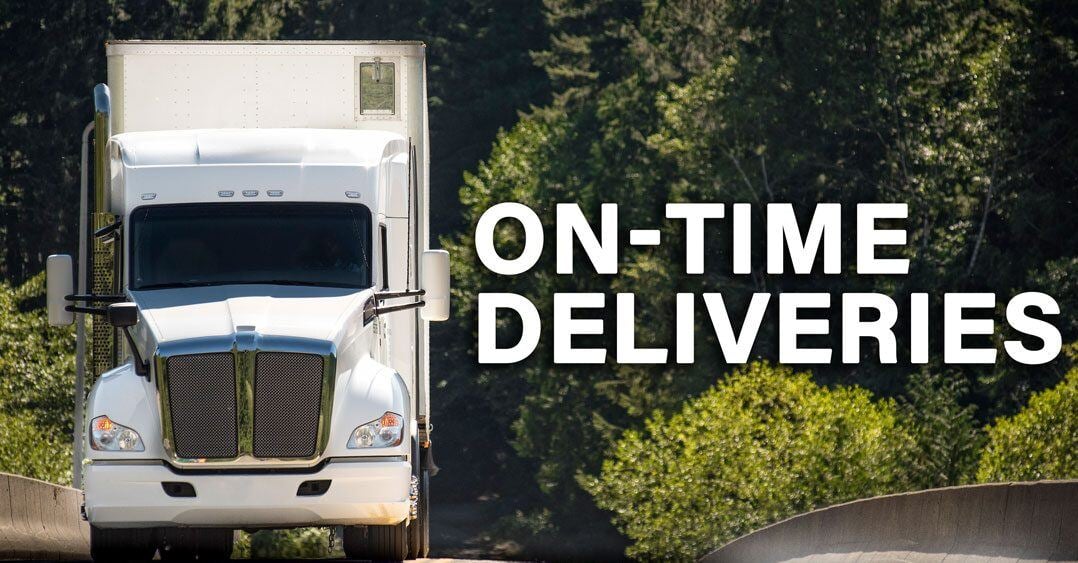
Considering how many consumers seek instant gratification today, it's no surprise that 84% of customers are unlikely to return to a retailer after a poor shipping experience. Gone are the days when shipping was simply about moving goods from point A to point B.
And this concept is true beyond retail too. Lean manufacturing, for instance, depends on consistent and timely flow of materials and components to maintain production schedules and minimize waste. In both B2C and B2B environments, shipping is now a critical component of the overall customer experience, impacting brand perception, loyalty, and ultimately, the bottom line.
Now, outbound shipping is a critical touchpoint in the customer journey, shaping brand perception and influencing buying decisions.
The Link Between Shipping and Brand Perception
Outbound shipping isn't just about logistics; it's a powerful tool for shaping brand perception and fostering lasting customer relationships. Every delivery is an opportunity to reinforce your brand promise and build trust.
Fast and reliable shipping is fundamental to building trust. When you consistently deliver on time, you demonstrate competence and commitment. Imagine a manufacturing plant relying on a just-in-time inventory system. A delayed shipment of critical components can halt production, resulting in costly downtime and eroding trust in the supplier. On the other hand, consistently meeting delivery deadlines builds confidence and strengthens the customer-supplier relationship.
Beyond speed and reliability, other aspects of shipping contribute to overall customer satisfaction. Shipping costs, transparency, communication, and the condition of goods upon arrival all play a role. For instance, a company that proactively provides shipment tracking and updates keeps customers informed and reduces anxiety about their orders. This level of transparency enhances the customer experience and fosters a sense of control.
Coupled with careful packaging and handling practices to minimize damage, this builds confidence in the brand's commitment to quality and customer satisfaction. Taking steps to mitigate damage, such as using appropriate packaging materials and partnering with reliable carriers, demonstrates a commitment to delivering a positive customer experience from start to finish.
Positive shipping experiences are a catalyst for repeat business. When customers enjoy a seamless and hassle-free delivery process, they are more likely to return for future purchases. Studies show that 93% of online shoppers are likely to make repeat purchases from companies with excellent shipping.
Positive shipping experiences also fuel word-of-mouth marketing, as satisfied customers share their positive experiences with colleagues and friends. This organic advocacy can be incredibly valuable, especially in B2B, where referrals and reputation carry significant weight.
Aligning Outbound Shipping with Your Customer Value Proposition (CVP)
To truly leverage the power of outbound shipping, it needs to be more than an afterthought. It must be strategically aligned with your overall business goals and, most importantly, your Customer Value Proposition (CVP). Think of your CVP as a promise to your customers—it defines what value they can expect from your products or services. It's the foundation upon which your brand is built and the reason customers choose you over your competitors.
Defining Your CVP and Base Logistics Services
Clearly defining your CVP is the first step. What makes your company unique? Are you focused on delivering the highest quality, the lowest prices, or the fastest service? Your CVP will inform every aspect of your business, including your shipping strategy.
This is where setting a Base Logistics Services (BLS) comes into play. BLS are the foundational elements of your shipping strategy, designed to support and reinforce your CVP. They are the building blocks that enable you to deliver on your brand promise. For instance, if your CVP emphasizes speed and responsiveness, your BLS should prioritize expedited shipping options and proactive communication with customers. Imagine a customer ordering a time-sensitive replacement part – rapid delivery and real-time tracking updates are essential to meeting their needs and reinforcing your commitment to swift service.
If cost-effectiveness is a key component of your CVP, your BLS might focus on optimizing shipping routes and consolidating shipments to reduce expenses. This could involve negotiating favorable rates with carriers, implementing efficient packaging practices, or leveraging technology to streamline logistics.
Adapting to Change
However, aligning your shipping strategy with your CVP isn't always straightforward. Customer expectations and market dynamics are constantly evolving, which means your CVP and BLS may need to adapt as well. This can create challenges as businesses grapple with shifting priorities and strive to maintain a consistent brand experience. Imagine a company that built its reputation on offering free two-day shipping.
As customer expectations shift towards even faster delivery options, this company may face pressure to enhance its shipping services, potentially impacting profitability. Perhaps they need to explore regional warehousing options, partner with last-mile delivery providers, or even consider using drones for certain deliveries.
Another challenge arises when businesses expand into new markets or introduce new product lines. The CVP and BLS that worked perfectly for their existing customer base might not be suitable for a new target audience or product category. For example, a company specializing in lightweight consumer goods might need to rethink its shipping strategy when launching a line of bulky furniture items. Different shipping carriers, packaging requirements, and delivery expectations will come into play. Similarly, expanding into a new geographical market may require adjustments to accommodate regional preferences and logistical considerations.
Furthermore, competitive pressures can also trigger the need to re-evaluate your CVP and BLS. If competitors start offering faster shipping, lower costs, or more innovative delivery options, you may need to adapt your strategy to remain competitive. Failing to do so could result in losing market share and eroding customer loyalty. Staying informed about competitor activities and industry trends is essential for maintaining a strong position in the market.
Navigating these complexities requires careful planning and a deep understanding of both your customers and the shipping landscape. Many businesses find that their CVP and BLS are moving targets. Developing a flexible and responsive shipping strategy is essential to staying ahead of the curve and consistently delivering on your brand promise.
Effective Communication and Service Level Agreements (SLAs)
Setting Clear Expectations
Open and honest communication is crucial when it comes to shipping. Customers value transparency and want to be kept informed throughout the delivery process. Clearly communicate shipping options, costs, and estimated delivery timeframes upfront. Provide proactive updates and notifications, allowing customers to track shipments with ease. This level of transparency builds trust and reduces anxiety, leading to a more positive customer experience.
Consider establishing Service Level Agreements (SLAs) with your customers to formalize shipping expectations and ensure accountability. SLAs clearly define performance metrics, such as delivery timeframes, order accuracy, and responsiveness to inquiries. They provide a framework for managing customer expectations and measuring performance, fostering a sense of reliability and professionalism.
Negotiating with Carriers
Negotiating with carriers can be complex, requiring a deep understanding of industry practices and market dynamics. Don't be afraid to leverage your bargaining power, especially if you have consistent shipping volumes and spend over $10 million annually. Clearly define your shipping requirements and expectations, and be prepared to compare rates and services from multiple carriers. Building strong relationships with carriers can also lead to more favorable terms and greater flexibility.
Navigating the intricacies of carrier contracts and service-level agreements can be challenging. Leveraging expertise and industry knowledge can significantly strengthen your negotiating position and ensure you secure the best possible rates and service levels.
Turn Deliveries into Delight with Outbound Freight Management
Outbound shipping is more than just moving goods; it's a strategic lever for shaping brand perception and cultivating lasting customer relationships. By aligning your shipping strategy with your Customer Value Proposition, communicating transparently with customers, and negotiating effectively with carriers, you can transform outbound shipping into a competitive advantage.
Businesses with a strong omnichannel strategy, which includes seamless shipping and returns, retain an average of 89% of their customers, compared to 33% for companies with weak omnichannel engagement.
Remember, every delivery is an opportunity to reinforce your brand promise and build trust. Prioritize fast, reliable shipping, provide proactive communication, and strive for a seamless customer experience. By focusing on these key elements, you can elevate your outbound shipping from a logistical function to a driver of brand loyalty and business growth.
Ready to elevate your outbound shipping and enhance your brand? Contact Customodal today for a free consultation and discover how we can help you optimize your freight management strategies!





